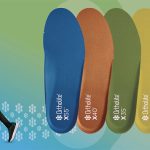Under Armour, Inc. reported a fourth-quarter beat but a cautious outlook amid foreboding supply chain warnings caused the stock to slide. Analysts generally felt the stock’s pullback offers a more attractive entry point into a brand on the rebound although a few were seeking more visibility.
On Friday, shares fell $2.50, or 12.5 percent, to $17.51 on the report. The stock’s 52-week price ranges between $17.18 to $27.28.
Highlights of the fourth quarter ended December 31 include:
- Revenue grew 8.9 percent (8 percent currency-neutral) to $1.53 billion, topping Wall Street’s consensus estimate of $1.47 billion. The beat was attributed to higher demand across full-price wholesale and direct-to-consumer (DTC) businesses, particularly in North America, coupled with better than expected supply chain execution.
- By channel, wholesale revenue increased 16 percent and DTC increased 10 percent with e-commerce advancing 4 percent (more than 30 percent on a two-year basis.) By product category, apparel and footwear grew 18 percent and 17 percent respectively, and accessories declined 27 percent due to lower masks sales. By region, North America gained 15 percent (up 8 percent against 2019). International revenue increased 3 percent. EMEA revenue jumped 24 percent (11 percent against 2019). The Asia Pacific was down 6 percent (up 19 percent against 2019).
- Gross margins expanded 130 basis points to 50.7 percent, exceeding expectations due to lower than planned promotions within its DTC and wholesale business and more favorable pricing to the off-price channel.
- Adjusted earnings rose 21.8 percent to $67 million, or 14 cents a share, topping consensus estimates of 7 cents.
- Under Armour said it is changing its fiscal year-end from December 31 to March 31 with the new fiscal year providing a better reading into Fall/Winter orders. Due to the change, Under Armour did not provide a fiscal 2023 financial outlook.
- For the transitional quarter ended March 31, revenue is expected to increase mid-single-digits, down from previous guidance of low-single-digits. The expectation includes 10 percentage points of headwinds related to reductions in its Spring/Summer 2022 order book due to supply constraints. Gross margin is expected to be down 200 basis points, including 240 basis points of negative impact due to higher freight expenses in addition to unfavorable sales mix, partially offset by pricing benefits. EPS is expected to range between 2 cents to 3 cents against 16 cents a year ago and Wall Street’s consensus estimate of 14 cents.
The following is a summary of analyst views on the quarter:
•Baird maintained its “Outperform” rating, reduced its FY23 EPS estimate and lowered its price target to $28 from $32.
Jonathan Komp wrote in a note, “Q4 results handily exceeded estimates driven by strength in North America and gross margin upside. Management expressed confidence in brand health and improved quality of sales, yet struck a cautious tone (compared to peers) on near-term sales and margin headwinds. We think F2023E estimates now appear largely ‘de-risked,’ setting up a compelling opportunity from current levels if UAA can prove the ability to deliver an unchanged multi-year margin recovery (we still see F2025E EPS of $1.50).”
•Cowen reiterated its “Buy” rating on Under Armour, lowered its FY23 EPS estimate and trimmed its price target to $28 from $30.
John Kernan wrote in a note, “Positioning into Q4 earnings felt one-sided – particularly following four sell-side upgrades in early 2022 and our conversations with investors. In terms of the model, we are now slightly below consensus EPS expectations in FY23/24. The stock lacks a true catalyst until FY23 guidance in May.”
•Citi Research kept its “Buy” rating on Under Armour and price target at $28.
Paul Lejuez wrote in a note that the fourth quarter was an “all-around great” quarter with the beat led by North America, its most mature market; and sales guidance raised for the current quarter. However, he said the positives were overshadowed by commentary around supply chain headwinds expected to weigh on sales and profits.
Lejuez continued, “We view stock weakness as an overreaction. We believe mgmt took a conservative approach to guidance, and they are spending big (esp on Mktg) during the stub quarter, which should help their F23 guidance be much more clean when they give it in May. The brand is resonating with the consumer, which we believe will drive top/bottom line upside from here. With shares trading at less than a 20x P/E on F23E, we believe the risk/reward is favorable at current levels.”
•B. Riley Securities reiterated its “Neutral” rating on Under Armour and lowered its price target from $21 to $18.
Susan Anderson wrote in a note that although the fourth quarter surpassed estimates due to sales momentum in North America and margin leverage, UA officials provided weak 1Q guidance and did not provide full-year expectations.
Anderson wrote, “We believe that no full-year guide was given due to uncertainty around inventory deliveries impacting their order book outlook and the change in the FY. UAA also continues to see rising SG&A costs that outpace revenue gains, with SG&A costs up +11.2 percent in 4Q vs. 4Q19 versus sales up +6.1 percent versus 4Q19. We remain on the sidelines until there is additional visibility for FY22’s sales, more sustainable margins, or a more attractive valuation.”
•Stifel reiterated its “Hold” rating on Under Armour and lowered its price target to $20 from $24.
Jim Duffy described Under Armour’s fourth-quarter as “solid” with revenue and earnings exceeding expectations, driven by North America sales and gross margin strength. The March transition quarter was more mixed, with sales guidance being modeled higher but EPS remaining the same reflecting transportation cost pressure. FY23 revenue estimates moved higher but Stifel’s EPS estimate likewise remains unchanged due to expected cost pressure.
Duffy wrote, “We expect operating margin progress will stall in FY23 (8.6 percent versus 9.3 percent in CY21), before surpassing CY21 levels in FY24E (9.6 percent). With 1) operating margins closer to structural margin potential, 2) near-term limitation on margin improvement, and 3) multiple compression in the comp set, we see it appropriate to take a more conservative view on valuation.”
•BMO Capital Markets maintained its “Buy” rating on Under Armour and kept its price target at $25.
Simeon Siegel wrote in a note that Under Armour “beat revenues/GM and guided revenue up with healthy underlying GM (pressured by supply chain). However, proactively cutting-inventory receipts and brand-elevating marketing dominated the narrative, a spend which can be dialed back if need be, not to mention “new UAA” is nothing if not conservative guiders. Long-term brand health and potential cash-driven EPS booster ahead. We believe Friday created attractive entry points with UA outperforming on the hard parts (sales and GM) and disappointing on the parts under its control (brand-focused inventory and marketing decisions).”
Photo courtesy Under Armour
















